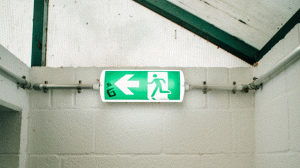Need to craft the “perfect” CV, but find yourself just staring at a blank sheet? If the phrases “personal achievements” or “relevant experience” make your palms sweat, look no further: In this guide, tbd* will thoroughly prepare you to whip out a CV so compelling, potential employers won’t know what hit ‘em.
Organization
A great CV need only provide relevant details, so try to nail the basics, and leave the fluff at home. The most topical sections include:
- Personal/contact information
- Education and qualifications
- Works history and/or experience
- Relevant skills to the job in question
- Personal interests
- Achievements or hobbies
- References
Presentation
Excellent presentation could be the difference between getting an interview and getting the boot, so make your two pages – no more – of clean, white paper count.
Layout should be simplistic, well-structured, and take into account the CV “hotspot.” That is, the upper middle area of the first page, where the recruiter’s eye will naturally fall upon first glance; try to place your most relevant information here to optimize your chances of landing in the interview pile, rather than the trash bin. A recent study found that the average recruiter only spends 6 seconds looking at your CV before deciding whether to pursue your application further. Make sure you use the "hotspot" space well to really grab their attention and set yourself apart.
Make sure job titles, employment dates and company names are easily distinguishable.
If you’re going the old school snail mail route, a professional CV is never crumpled or folded in any way – use an A4 envelope when mailing applications to ensure a polished result.
Make sure to get a friend to proofread your materials before sending them out. Nothing is worse than a glaring typo in the first sentence of your CV.
Content
A CV that is clear, concise, and makes relevant points in a direct fashion reflects well on its applicant. Potential employers tend to judge a CV within seconds, so keep things short and sweet, and don’t expect a detailed read-through.
Choosing relevant content can often seem the most intimidating facet of creating a great CV. With that in mind, here are a few guidelines for highlighting only the most salient details of your history, interests, and relevant skill set:
Personal Profile
Generally, the personal profile – sometimes known as a career aim, career summary, or personal statement – should not exceed 200 words.
In order to best focus on the sector to which you are applying, carefully consider the details of the job description; try taking notes, highlighting points you feel are well-served by your skill set or experience. Of course, there may be areas you feel you can’t so easily satisfy, but it is possible – and necessary – to adapt the skills you are confident you do have to fill in any professional gaps. In this way, you prove your skills are transferrable.
Focus on what you can offer them – and not what you hope to get out of the position. You need to convince them that you’re an asset to their company.
Show, Don’t Tell
Employers are going to be most impressed by what you’ve already done. Anyone can fill a CV with buzzwords, but if you focus on your accomplishments, you’re much more likely to get noticed. Quickly highlight your greatest professional achievements that show you’ve got the skills to make awesome things happen. If you can, use numbers to make your point. For example, don’t just say you managed the social media pages for your previous employer, highlight the point that your social media campaign resulted in 10,000 new Facebook likes in a month.
Details
Having distinguished what the particular role entails, build your CV around what you’ll be doing at that company, tailoring the details for relevance’s sake.
That said, CV’s are easily adaptable, so no need to completely rewrite the entire two pages from company to company!
Just make sure you hit these points:
- Mention “standout” skills that can easily distinguish you from other applicants. These can include: computer skills, communication skills, foreign language fluency, an affinity for working in teams, the ability to problem solve, etc. Consider the transformation or solidification of your skill set over the course of your professional career; even seemingly irrelevant experience is more applicable than you might think.
- Fill in the gaps. Leaving obvious gaps in your CV will make employers suspicious – and unfortunately, they won’t always give you the benefit of the doubt. Instead of ignoring it, address it! Did you do volunteer work abroad, learn another language or develop some soft skills like teamwork, project management or team building? Try to fill in the gaps with positive things!
- When considering “personal interests,” describe any positions of responsibility or any role that displays resourcefulness, dynamism, or creativity. Display a diverse set of interests, and try your best to relate each to the job at hand.
- Always include references from previous employers who can vouch for your strongest skills. In this case, two is always better than one.
- To keep employers interested, always keep your CV updated and relevant.
Good luck!










